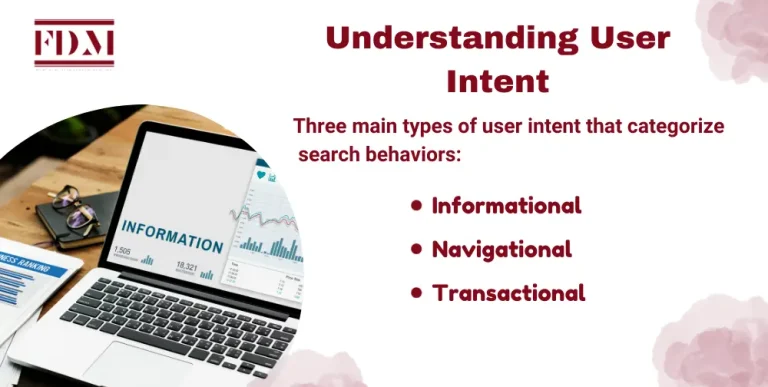In today’s market, establishing a robust online presence is essential for any business. One major factor of that presence includes effective search engine optimization techniques. At the core of such an SEO method is the power of keywords: specific terms and phrases used by potential customers in search of products, services, or information over the internet. Notice and utilize the high-search SEO keywords, and you will see immense improvement in your website’s traffic and conversion rates. This guide is dedicated to doing exactly that.

Understanding the Importance of SEO Keywords
Why are keywords important in SEO? This is because they connect your content to search queries your prospects may enter into the search engines. Optimizing your website with the right keywords increases the chances of being listed in the search results and hence drives organic traffic toward your website. In particular, high-search keywords have a large search volume: many people are looking for them. Optimizing your website for these keywords can help in attracting more audiences. If you are in search of the Best SEO Company in Chennai, knowing the worth of keywords, it is FuelDigi Marketing Pvt Ltd.
Step 1: Brainstorming Initial Keyword Ideas
Before getting into keyword research tools, ensure an initial list of keywords you think are related to your business. Consider the following:
- Products or Services: Which are the primary goods or services you plan to provide?
- Customer Inquiries: What are some common questions that your customers keep asking?
- Industry Terms: Do customers use phrases or words peculiar to your business?
- Competitor Analysis: For what keywords are your competitors ranking?
For instance, if you are a massage therapist, some of the keywords on your starting list may include “massage therapy,” “deep tissue massage,” “relaxation techniques,” “spa services,” or “therapeutic massage.”

Step 2: Using Keyword Research Tools
Now, with this preliminary list, you will use keyword research tools to expand upon it and lock down your keywords. These tools give valuable insights into volume, difficulty, competitiveness, and trends, showing how well each would work for a target. Some of the most effective and popular tools for this are:
Google Keyword Planner
Google Keyword Planner is a tool, available for free, in Google Ads. This tool serves as a good starting point for keyword research. You can just feed seed keywords, and Google Keyword Planner will return a list of related keywords with the average monthly search volume for each one.
- Search Volume Data: The feature provides the approximate number of searches per month with every keyword, which will let you know how those keywords are popular.
- Keyword Suggestions: Taking into consideration your first input, this tool suggests to you other important keywords that you might not have considered.
- Competition Analysis: Google Keyword Planner displays competition scores, which tell you how many advertisers are bidding on the use of each keyword. Using this, you can deduce how difficult it could be to rank for such terms organically.
- Bid Estimates: Additionally, the tool also provides estimated bids for Google Ads customers, indicating what keywords one is most likely to pay for with paid search.
SEMrush
SEMrush has grown into a fully-packed SEO tool with detailed keyword research features, making it the favorite of most digital marketers.
- Keyword Volume and Difficulty: SEMrush provides detailed information on search volume and keyword difficulty, thus zeroing in on the real keywords with the best potential that you will be better ranking.
- Competitive Analysis: One of the greatest things about SEMrush is that it allows you to analyze keywords from your competitors. You will be able to notice which ones drive the most traffic to their sites and look into their SEO strategies.
- Keyword Magic Tool: This feature gives huge lists of keyword ideas, related to your initial terms, organized in thematic groups for easier relevance identification.
- Trend Analysis: SEMrush can track keyword trends over time and show seasonal variations in keywords or emerging topics.
Ahrefs
Ahrefs truly is an ultra-powerful SEO tool destined to become a classic in keyword research and competitive analysis.
- Search Volume and Difficulty: Well, Ahrefs can provide real search volume data and keyword difficulty scores, enabling you to set a priority against your keywords based on the real potential impact.
- Keyword Explorer: It helps you generate keyword ideas and further shows what pages are ranking for the selected keywords, making it very easy to get a sense of what kind of content performs well.
- Backlink Analysis: You can use Ahrefs to see the backlink profiles of top-ranking pages, which helps in understanding what link-building strategies work for your keywords.
- Content Gap Analysis: This will help you identify what keywords your competitors are ranking for but you aren’t, therefore showing how you can broaden your keyword strategy.
Ubersuggest
Ubersuggest is that friendly-looking keyword research tool from Neil Patel. It’s got tons of features built, so it really makes doing keyword research easy.
- Keyword Suggestions: Ubersuggest generates keywords off of a seed keyword, thus helping to uncover new opportunities in keywords.
- Search Volume Data: It provides the search volume for every keyword, thus showing their ranking popularity.
- SEO Difficulty Scores: Ubersuggest provides difficulty scores for SEO, suggesting how hard it might be to rank for each keyword organically.
- Content Ideas: It also generates ideas for content based on provided keywords and produces articles and blog posts that have performed well in that area at the top, which alone may prove useful to draw from in creating your own content.
- Top-Ranking Pages: Not only does Ubersuggest give you a list of top-ranked pages for every keyword, but it also helps in the analysis of their content and SEO strategies.
Using such keyword research tools, you can further fine-tune your seed list, find many new high-potential keywords, and develop an overall keyword strategy that would align with your business goals and targets of the right audience.
Step 3: Analyzing Search Volume and Competition
Once you’ve compiled a list of potential keywords, take note of their search volume and competitiveness. High-search keywords are searched for with high volumes, meaning many people look for them. However, often, high competition exists with such keywords, and it is hard to rank for them.
To strike the right balance:
- Search Volume: Concentrate on terms that receive a lot of searches. These will send an enormous amount of traffic to your site.
- Competition: Research the competitive level for every keyword. A high competitive level puts one website into rivalry with many other websites targeting the same keyword. So, targeting long-tail keywords—phrases of words more specific to the product with lower search volume, hence less competition—may come into place.
For example, “massage therapy” can have a high search volume with high competition, while a long-tail keyword like “best massage therapy for stress relief” is bound to have lower search volume but lesser competition as well.
Step 4: Understanding User Intent
User Intent refers to the purpose implied in a Query. Understanding this intent is very important if relevant keywords are to be selected. Three types of User Intent can be used to define Searching behavior:
- Informational: One is searching for knowledge or an answer to a certain question. For example, “benefits of massage therapy.”
- Navigational: The user is seeking an individual site or specific Web pages. For example, “XYZ Massage Therapy Clinic.”
- Transactional: User wants to do some particular thing or complete a purchase. Example: “book massage appointments online.”
While choosing the keywords, always remember what intention the user has behind every search. Try to match your content with user intention in order to increase the chances of attracting and maintaining users or visitors.

Step 5: Creating High-Quality Content
Once you identify high-search keywords that are relevant to the intent of the user, it is time to form quality content around these keywords. Follow these easy tips on how to develop quality customer attention:
Provide Value
Your content should be useful, informative, and relevant to the audience’s needs and interests. It can answer common questions, solve problems, or probably even bring some significant experience by exposing your insights.
Use Keywords Naturally
Work your keywords naturally into your content. Never stuff any of your target keywords into the content, for it will hurt your strategy in SEO. Instead, engage with information-laden content that flows freely.
Optimize On-Page SEO
Make sure your content is on-page SEO friendly. These are closely related to the use of keywords in:
- Title tags
- Meta descriptions
- Headings (H1, H2, H3)
- URL slugs
- Image alt text, more
Use Visuals
Make it more engaging by adding images, infographics, and videos into your content. Visuals will also provide you more areas to improve for search engines.
Update and Refresh Content
Refresh and continuously update your content to demonstrate to search engines that the subject remains relevant and useful.
Step 6: Monitoring and Adjusting Your Strategy
Well, the thing is that SEO never stops. Keep an eye on how your performance is going according to the key words and develop the strategy further in the light of information attained. Keep a track of your traffic, ranking, and user engagement with tools like Google Analytics and Google Search Console.The following are a few measures you should be aware of:
- Organic traffic
- Bounce rate
- Average session duration
- Conversion rate
In case you find some of the keywords are not performing well, then there has to be a change in the content or the other way round by targeting different keywords. Be updated with the trends of SEO and algorithm changes to keep your strategy in line. If you’re looking for the Best SEO agency in Chennai who keeps updating with SEO trends and algorithms, then it is FuelDigi Marketing Pvt Ltd.
Conclusion
One of the most important components of an effective strategy in digital marketing is finding high-search SEO keywords that attract the attention of customers. By following these steps generating initial ideas, using keyword research tools, checking search volume and competition, truly understanding user intent, writing high-quality content, and monitoring your strategy you’ll effectively target keywords driving traffic and conversions to your site. Keep in mind, it is something dynamic this means work on perpetual change and adaptability. The right approach will mean long-term success and growth for your online presence.
Follow these steps, take some time over your SEO, and you’ll be sure to capture the attention of that target audience. Get researching keywords today and watch your website traffic shoot through the roof!


